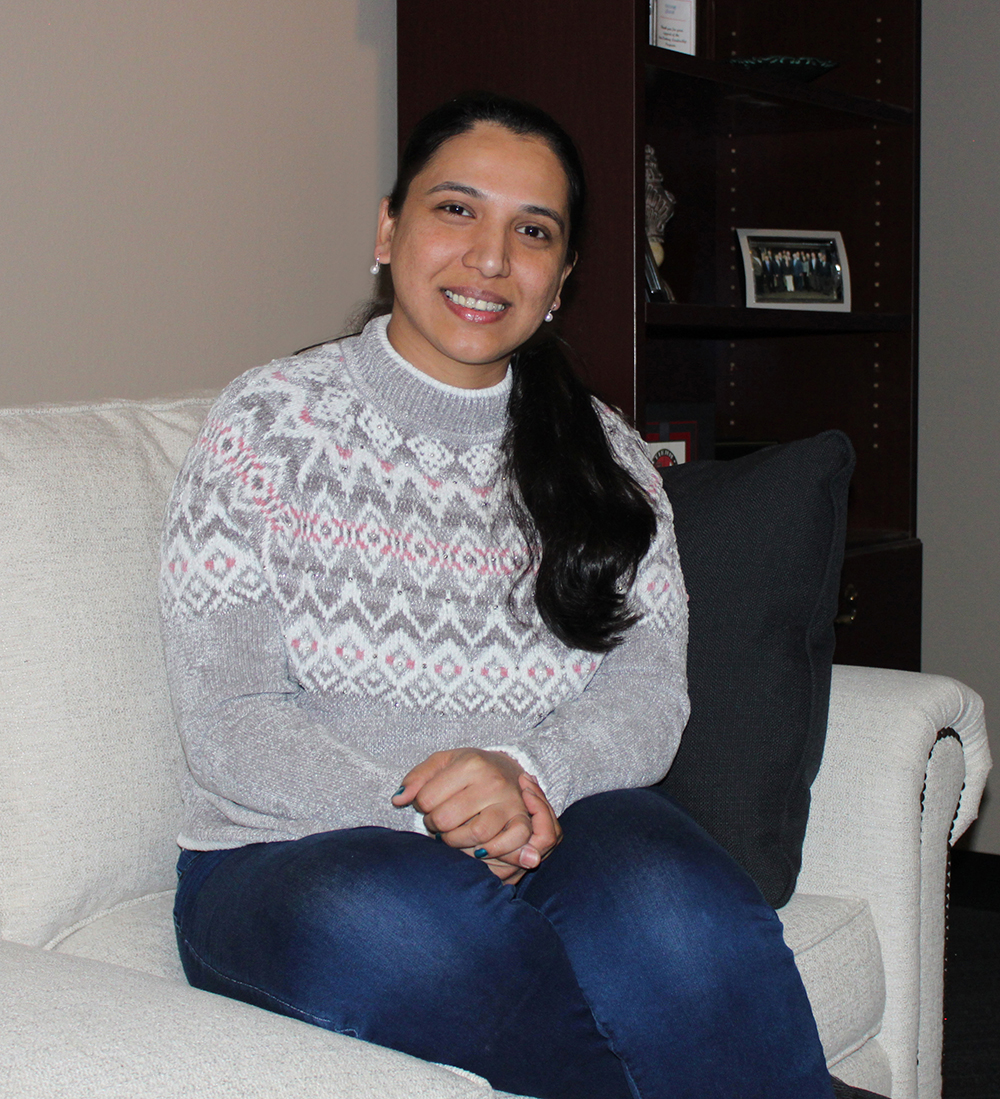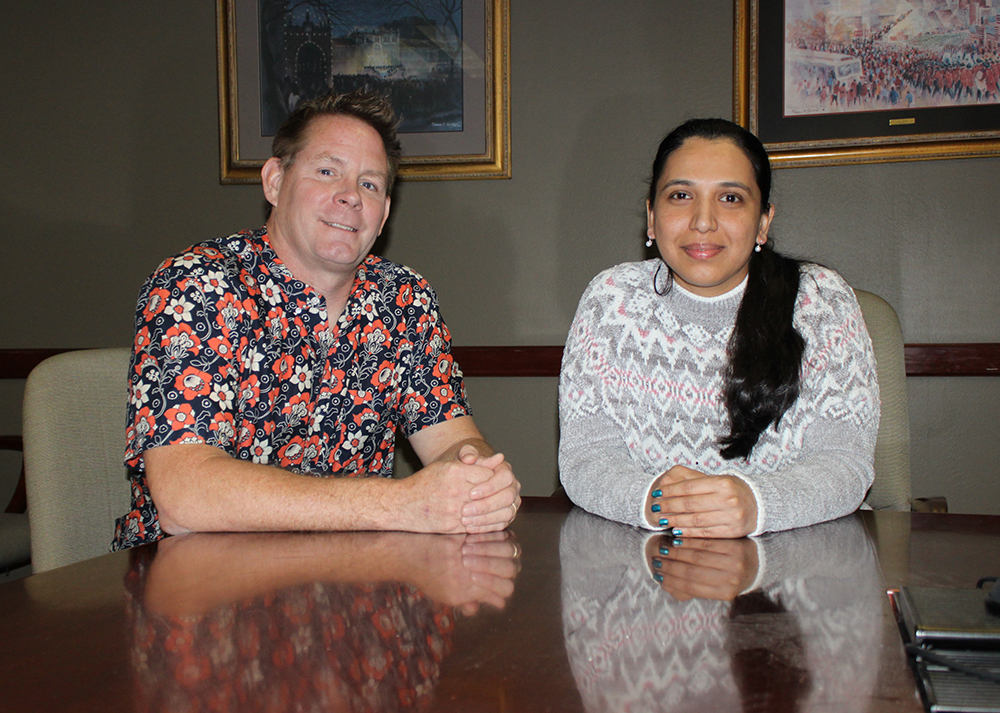Kruuttika Satbhai Awarded for Toxicology Research

Kruuttika Satbhai is a graduating Ph.D. student from Texas Tech University's Department of Environmental Toxicology.
Graduating Ph.D. Student Studied Pollutants Found in Local Groundwater
5.23.2022 | Toni Salama
Kruuttika Satbhai has been fascinated by science since childhood. It is a calling that brought her halfway around the world to earn her Ph.D. from Texas Tech University's Department of Environmental Toxicology. She graduates in August following a June dissertation defense.
Along the way, Satbhai has received numerous awards for her research—most recently from the Society of Toxicology—and is learning the craft of leadership by serving on local and national boards and committees. This November, she will co-chair a session at the annual North America meeting of the Society of Environmental Toxicology and Chemistry (SETAC).
Satbhai won the 2022 John Doull Risk Assessment Endowment Award, presented by the Society of Toxicology's Risk Assessment Specialty Section, for her research on a class of pollutants called perfluorinated compounds (PFAS), which have been found in local groundwater.
The area around the former Reese Air Force Base, which now houses TTU's Department of Environmental Toxicology, is one of eight locations nationwide selected for a long-term study on the effects of PFAS by the U.S. Centers for Disease Control (CDC) and the Agency for Toxic Substances and Disease Registry.
Satbhai and her co-authors conducted the award-winning research at the Reese campus in the Aquatic Toxicology laboratory of her faculty mentor, Jordan Crago, a TTU assistant professor of aquatic toxicology.
Crago noted that a common substitute for PFAS, called GenX, has been found in drinking water in North Carolina and is a current replacement product for the type of PFAS used in the Lubbock area, he said. Scientists like Crago are now wondering what impacts this substitute could have on environmental and human health.

Kruuttika Satbhai (right) with her faculty mentor, Jordan Crago (left).
While Satbhai's work is not connected with the federal agencies, it addresses some ongoing questions in the toxicology community:
-
- Are alternative PFAS compounds, such as GenX, truly safe?
- In terms of human health, what measurements of safety are the most reliable?
Satbhai explained that this group of compounds has become a cause of concern around the world because of their widespread use.
“In our project that was selected for the Doull award, we studied the toxicity of per- and polyfluoroalkyl substances,” she said. “These compounds were used globally in cookware such as Teflon, aqueous firefighting foams, or even in clothing, owing to their remarkable heat-, oil-, and water-resistant properties.”
The downside: As these compounds gained popularity worldwide, they became global contaminants that are now a concern because they persist in the environment, meaning that they do not degrade or get metabolized in living systems.
“It is alarming that these compounds have been detected in drinking waters and groundwater—even in Lubbock,” Satbhai continued. “Moreover, PFAS have also been detected in the blood of citizens of Lubbock, at levels higher than the national average.”
But perhaps not all PFAS are equal.
Some PFAS compounds are known as long-chain, designating a molecular structure of C8 or greater. This long-chain group of PFAS, which also includes perfluorooctanoic acid (PFOA), was once widely used in the United States until it was found to have adverse effects on the environment and on human health, Satbhai said.
These C8 PFAS have been known to cause developmental, reproductive, and neurological toxicity as well as cancer, she said. However, their exact mode of action still remains unknown.
“Hence, the Environmental Protection Agency (EPA), along with the major manufacturers of PFAS, decided to stop the production of these compounds in 2006,” she said. “As these C8 PFAS were banned, newer, short-chained PFAS replacements were introduced in the market that were presumed to be less toxic, and with less potential to accumulate in organisms.”
That assumption might have been premature.
Satbhai said that now, even the short-chain replacements, such as GenX, also have been detected in drinking waters. She wanted to know how the presence and toxicity of short-chain PFAS compared to that of long-chain PFAS.
Satbhai's research team assessed the impacts of PFOA and of the replacement GenX using embryo-larval zebrafish—a species ideally suited for studies on how chemicals may affect humans.
“We tested the effects of these chemicals on survival, hatching success, swimming behavior, and uptake and elimination rates in larval zebrafish in the Crago lab,” she said. “We also compared the changes in uptake and elimination rates of PFOA and GenX using both experimental data and mathematical modelling.”
Mathematical modelling was crucial to the project, and Satbhai credited co-author Carolina Vogs, a computational toxicologist at Karolinska Institutet-KI in Sweden, with spearheading that part of the research.
In a nutshell, the results were twofold:
-
- When looking at the exposure effect concentrations, GenX was less toxic than PFOA.
- When looking at the uptake and elimination rates, both PFOA and GenX have the potential to exert similar toxic effects.
“We believe that further research is needed for a better understanding of the true safety of replacement PFAS chemicals,” Satbhai concluded.
Recipients of the John Doull Risk Assessment Endowment Award are selected based on the scientific quality of the abstract, the scientific quality and significance of the research project overall, the significance of the findings, and on demonstrating excellence in health risk assessment. In addition to its scientific prestige, the recognition is accompanied by a plaque and a monetary stipend.
Satbhai said the Doull award is a source of great motivation and encouragement to continue her research in the toxicology field.
“I feel incredibly grateful and honored. My co-authors are also very happy to hear about the news,” she said. “The monetary reward will help me to cover my expenses for the annual Society of Toxicology conference as well as contribute toward the completion of an online course that will help me to further my understanding of modelling concepts in the field of toxicology.”
![]()
College of Arts & Sciences
-
Address
Texas Tech University, Box 41034, Lubbock, TX 79409-1034 -
Phone
806.742.3831 -
Email
arts-and-sciences@ttu.edu
